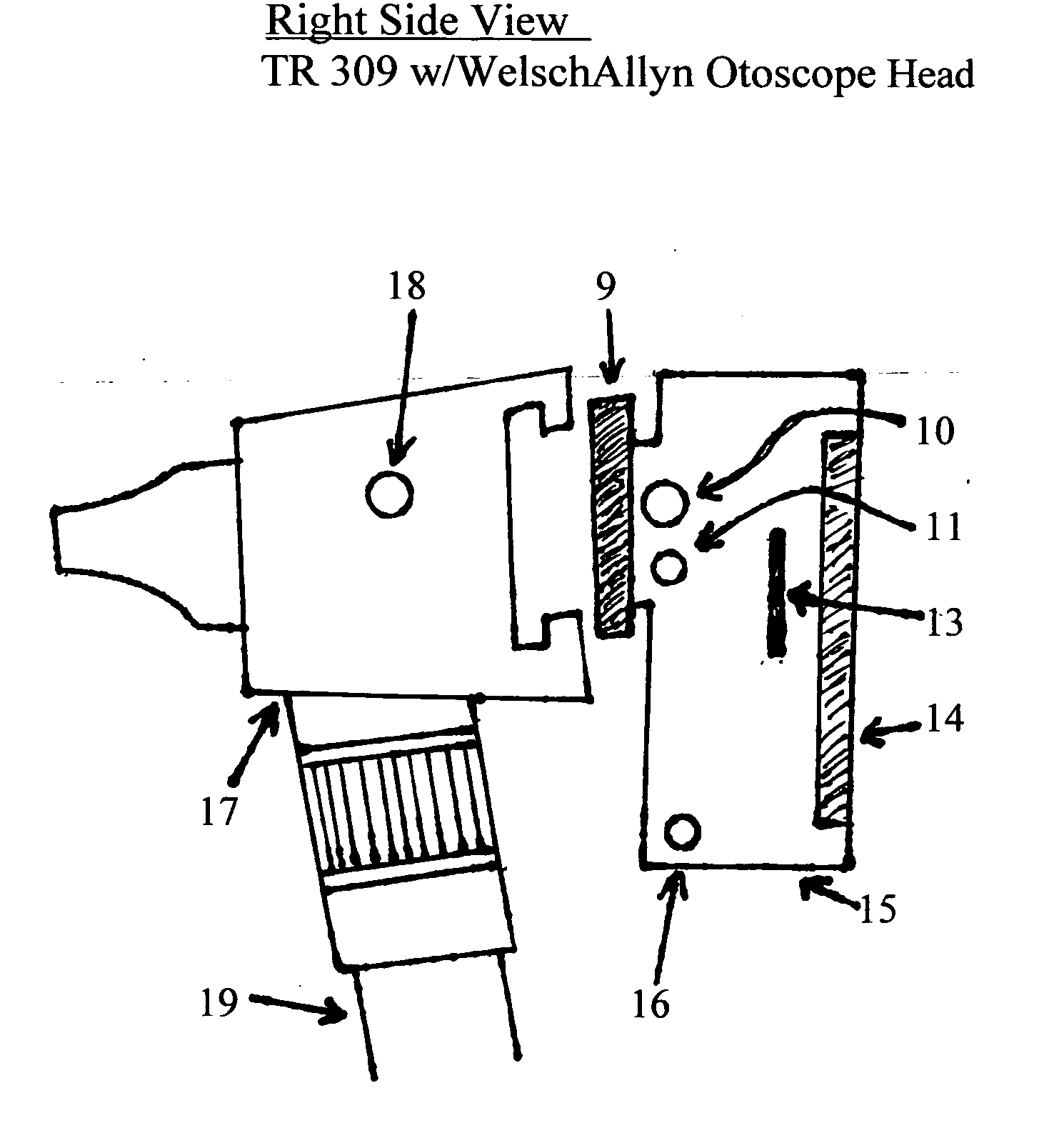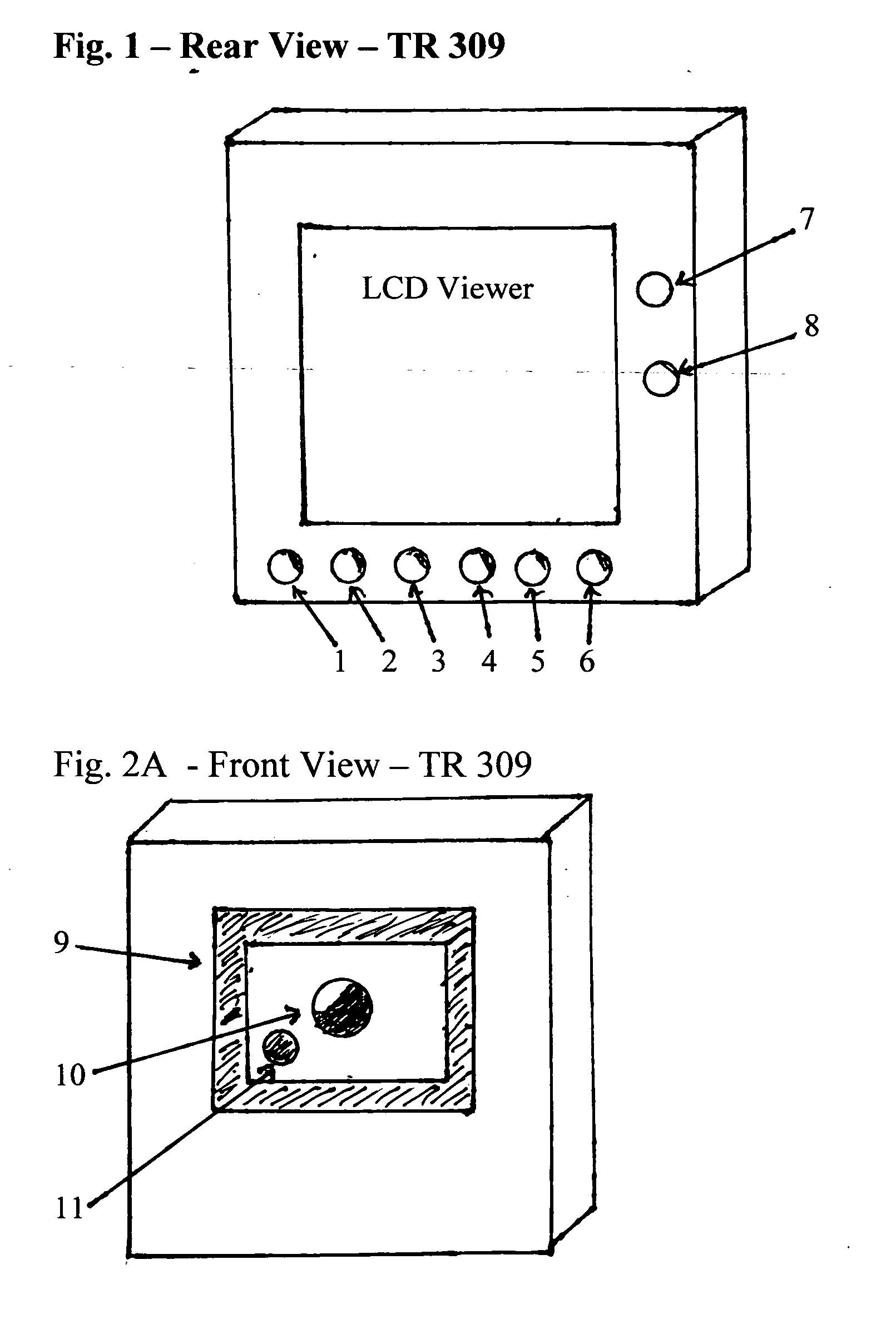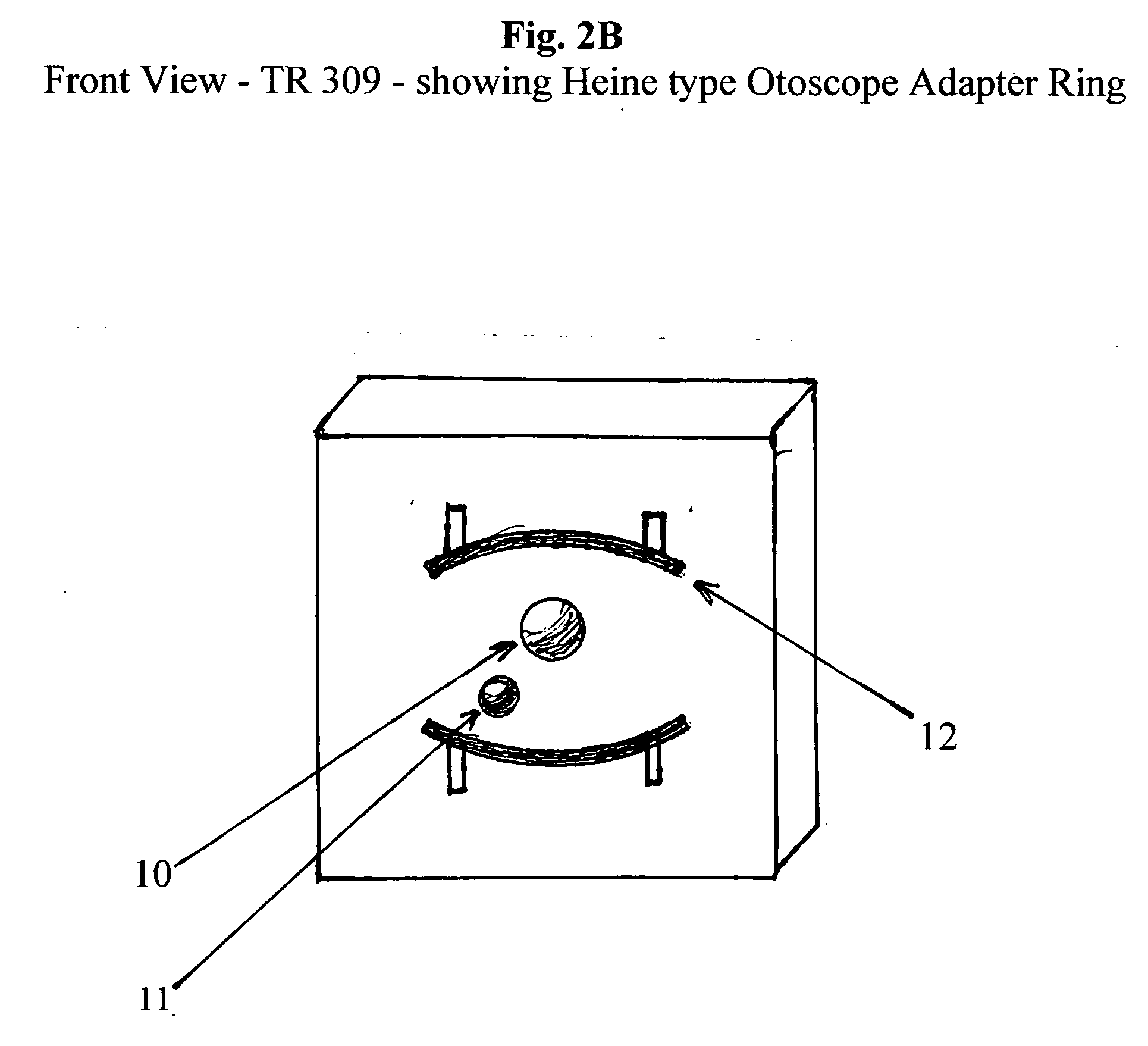TR309 - portable otoscope video viewer
- Summary
- Abstract
- Description
- Claims
- Application Information
AI Technical Summary
Benefits of technology
Problems solved by technology
Method used
Image
Examples
Embodiment Construction
[0028] The TR 309 Portable Otoscope Video Viewer contains a built-in Camera / LCD / Video Recorder (FIGS. 1, 3, 5, 6 and 11) in a molded plastic composite hard-shell compact case. The camera, LCD, and video recorder use pre-existing technology. The TR 309 is approximately 2 inches by 2 inches. The LCD is approximately 1½ by 1½ inches. It fits solidly onto the Welch Allyn Otoscope head (FIG. 3, # 17) via an adaptor (FIGS. 3 & 9), which is made of hardened rubber for ease of fit. The TR 309 is designed to fit into any physician's coat or shirt pocket. It can also be adapted to a Heine type otoscope using the spring loaded adapters shown in FIG. 2B. #12. These are pulled by spring pressure to securely fit it to the otoscope head. These (#12) are also made of hardened rubber.
[0029] The LCD and micro-camera technology is pre-existent and is as compact as possible, although adapted for this particular application. An example of a micro-camera is referenced in Patent No. 6704053 B1. The TR 30...
PUM
 Login to View More
Login to View More Abstract
Description
Claims
Application Information
 Login to View More
Login to View More - R&D
- Intellectual Property
- Life Sciences
- Materials
- Tech Scout
- Unparalleled Data Quality
- Higher Quality Content
- 60% Fewer Hallucinations
Browse by: Latest US Patents, China's latest patents, Technical Efficacy Thesaurus, Application Domain, Technology Topic, Popular Technical Reports.
© 2025 PatSnap. All rights reserved.Legal|Privacy policy|Modern Slavery Act Transparency Statement|Sitemap|About US| Contact US: help@patsnap.com



